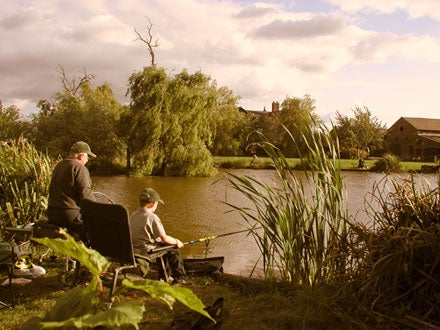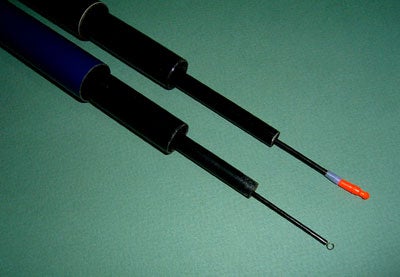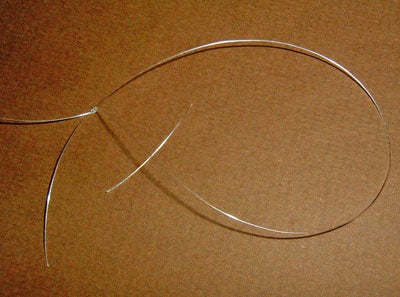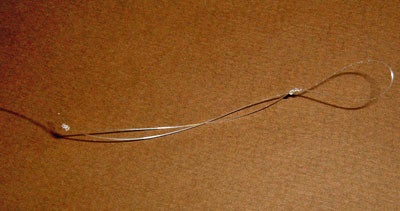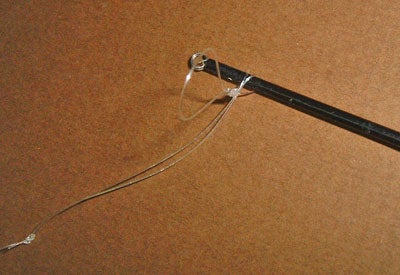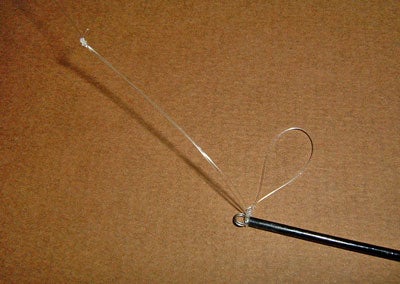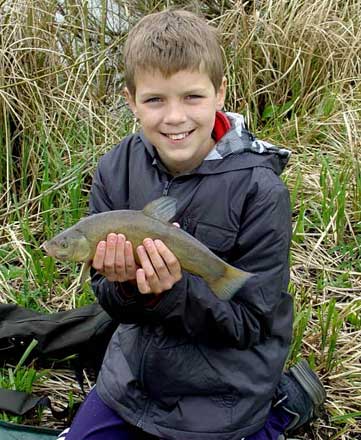Get Your Kids Fishing!THE SCHOOL SUMMER (if we get one) holidays will be starting shortly and it’s a great time to introduce youngsters to fishing. It’s best if you start them off appreciating the fun of simply catching fish, but without the complications of casting and retrieving line with a fixed spool reel.
The shops are usually full of short 3 and 4 metre whips, as they’re called. They can retail at anything from £ 6 – £ 15 depending on manufacturer, but without the additional cost of a reel, that’s about it other than a float and some hooks. Of course, they’ll want to borrow your landing net and chair, or seatbox. The way a whip is used is very similar to a normal pole, but because they have a very soft tip there’s no need to elasticate them. The line is attached directly to the tip and is normally just a little shorter than the full length of the whip. Here’s how to set one up. You’ll find a small metal ring fixed to the tip. You can simply tie some line direct to the ring if you like, but getting it off afterwards usually means cutting the line. Or you can use this method :- Step 1 – Take a spool of line, perhaps 4lbs, and tie a large loop at the end about 3″ long.
Step 2 – Form a smaller loop again by tying a double overhand knot about 1″ from the end so you have a short loop then a slightly longer loop.
Step 3 – To fix this to the end of the pole, use the main line and push it through larger loop so that when you push the pole tip through this new loop you’ve created and pull, the slipping loop tightens around the pole.
Step 4 – Now, work the line towards the end of the pole and tighten it again to make sure it’s behind the ring, but just in front of the pole end.
The line should stay put throughout the session. It should leave the smaller end loop sticking out and this can be used later when you want to take the line off the pole. Simply give the small loop a tug and the line should free itself.
You can unwind more line and cut it to about 2ft short of the full pole length. Fix on a standard waggler float, a small crystal waggler works well, and tie your hook on the end. Keep the bulk of the shot around the float, one shot above the float the rest about 1cm below to lock it, with just a no.6 dropper or two down the line to sink the bait. The small gap between the shot allows the float some flexibility to bend on the line.
These short poles are brilliant and later, if you want, you can elasticate the top section of the pole (see photo) with say a no.4 elastic. This provides an even softer pull on the strike and can help teach the youngster how hard to strike without damaging the fish’s mouth. Who knows, you might get to like this style of fishing yourself and buy a decent whip, margin or long pole. More importantly, get your kids out there and enjoy the fishing. NOTE: Children under 12 years of age DO NOT NEED a rod licence! If they are 12 and over, but 16 or below, they will require a junior licence available from a post office or the EA website. |
Welcome!Log into your account










